|
|
|
|
| |
|

At neighborhood cultural conversations, participants were asked “What do you LOVE about your neighborhood?” Photo by Lord Cultural Resources, Chicago Cultural Plan.
|
| |
|

Building Successful Communities of the Future through Cultural Planning
By Joy Bailey Bryant
Principal Consultant, Lord Cultural Resources |
Culture and creativity have the power to transform communities and local economies into thriving centers. Made popular in North America in the mid-1970s, cultural planning, a hybrid of urban planning, public policy, and arts administration, has been bandied about for years – achieving widespread notice when popular Chicago Mayor Harold Washington launched the City’s first "Cultural Plan" in 1986. In the mid-1990s, the European Union Treaties of Maastricht and Amsterdam required the European Commission to take into account the cultural dimension of its actions, launching cultural planning efforts across the EU and firmly establishing it as a responsibility of government. In 2009, former chair of the U.S. National Endowment for the Arts, Rocco Landesman, gifted the practice with another name – creative placemaking – and a financial incentive, in the Our Town grant, to create innovative artistic programs and stimulate the incubation of new industries, tourism and employment in cities and communities.
|
|
This edition of Cultural Capital is dedicated to cultural planning in all of its forms: |
 |
 |
 |
A global view of the methodology and execution of cultural planning by Lord Senior Consultant Javier Jimenez
(the What). |
Implementation of the Chicago Cultural Plan by working collaboratively in the city of Chicago by Municipal Cultural Planner, Julie Burros (the How).
The ways that cultural planning has empowered the arts community in the city of Decatur, Georgia, by Chief of Civic Engagement, Education and Communication, Linda Harris
(the How). |
The role that Foundations and city leaders play in planning for culture by Lord Consultant Priya Sircar
(the Who). |
|
|
+ Read More...
|
|
|
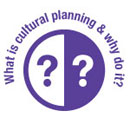
Cultural Planning: A Comparative View
By Javier Jimenez
Senior Consultant, Lord Cultural Resources |
There is no recipe for cultural planning across countries and regions. Different mind-sets, governance models and economic circumstances lead to very different perspectives on how to best plan for culture:
- In North America there is a growing conviction that culture is at the heart of city planning and that the community must be involved extensively in its design. As a result, cultural planning increasingly is addressed from a holistic perspective. Also, the enthusiastic adoption of creative economy theories has brought culture and economy closer than ever, with the realization that the future lies in public-private partnership.
- Such is not the case in Europe, which regards discussion of culture in economic and private terms with suspicion due to the social welfare state tradition. Culture tends to remain at the heritage and educational levels, with its advancement primarily the duty of the public sector, hence there is less involvement of the community in its long-term design.
- Asia is a whole new world. In the midst of an urban explosion and an improving economic climate, cultural planning has been tied to new infrastructure development projects. It is yet to be seen how these projects will cohabitate with other initiatives and how their citizens will gain ownership of them overtime.
+ Read More...
|
|
|
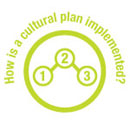
From Cultural Plan to Planning Culturally
By Julie Burros
Director of Cultural Planning, Chicago Department of Cultural Affairs and Special Events |
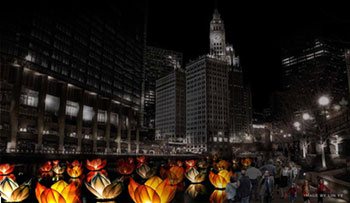 In February 2012, the City of Chicago’s Department of Cultural Affairs and Special Events (DCASE) commenced an exciting initiative to develop a cultural plan for the city. Launched by Mayor Rahm Emanuel in October 2012, the plan created a framework to guide Chicago’s future cultural and economic growth. The Chicago Cultural Plan 2012 is the centerpiece of the city’s strategy o becoming a global destination for creativity, innovation and excellence. As a direct result of the Cultural Plan process, DCASE is working collaboratively with sister governmental agencies like the Departments of Housing and Economic Development, Education, Innovation and Technology and countless other city entities to fulfill the 200+ initiatives of the Plan. While we have always worked with these departments, our level of partnership now far exceeds what had been happening before. In February 2012, the City of Chicago’s Department of Cultural Affairs and Special Events (DCASE) commenced an exciting initiative to develop a cultural plan for the city. Launched by Mayor Rahm Emanuel in October 2012, the plan created a framework to guide Chicago’s future cultural and economic growth. The Chicago Cultural Plan 2012 is the centerpiece of the city’s strategy o becoming a global destination for creativity, innovation and excellence. As a direct result of the Cultural Plan process, DCASE is working collaboratively with sister governmental agencies like the Departments of Housing and Economic Development, Education, Innovation and Technology and countless other city entities to fulfill the 200+ initiatives of the Plan. While we have always worked with these departments, our level of partnership now far exceeds what had been happening before.
+ Read More...
|
|
|

Decatur celebrates the Arts, 2013 Marks the 25th Anniversary of Decatur Arts Festival
By Linda Harris
Chief Civic Engagement, Education & Communication, City of Decatur |
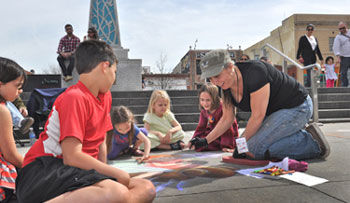 In 2010, the City partnered with City Schools Decatur, Agnes Scott College, the Downtown Development Authority and the Decatur Arts Alliance (DAA), at the time a fledgling membership organization for city artists and arts organizations, to create a Cultural Arts Master Plan (CAMP). In 2010, the City partnered with City Schools Decatur, Agnes Scott College, the Downtown Development Authority and the Decatur Arts Alliance (DAA), at the time a fledgling membership organization for city artists and arts organizations, to create a Cultural Arts Master Plan (CAMP).
Since that time, the DAA has taken ownership of "the arts" collaborating with a variety of partners to advocate and promote the arts. In celebration of the 25th anniversary of Decatur Arts Festival, DAA and the city are "ramping up" the visibility of the arts with a number of new initiatives that fulfill priorities in the CAMP.
+ Read More...
|
|
|

Beyond Funding: Foundations as Cultural Planners
By Priya Sircar
Consultant, Lord Cultural Resources |
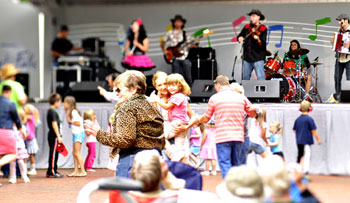 In late 2011, The Priddy Foundation of Wichita Falls, Texas, saw local arts organizations struggling in a city experiencing many challenges, from a weak economy to a shrinking population. In late 2011, The Priddy Foundation of Wichita Falls, Texas, saw local arts organizations struggling in a city experiencing many challenges, from a weak economy to a shrinking population.
The Foundation had funded arts in the past, along with education, health, social services and youth programs. Now it recognized that – despite ongoing financial support – the arts grantees continued to deal with the same financial and operational challenges year after year. The Foundation aimed to elevate the entire arts community and to do it strategically rather than continue to parcel out funds piecemeal and reactively. Above all, the Foundation prioritized creating a ground-up approach in which arts organizations would help design the plan rather than be handed a directive.
In early 2012 the Foundation began to develop a “strategic arts plan” wherein the local cultural community was extensively involved. Wichita Falls is home to an active set of professional and amateur artists, so particular care was taken to include individual artists. What began as an effort to offer strategic assistance to a few arts organizations became a grassroots mini-movement involving 55 arts and cultural organizations, numerous individual artists, all the major local foundations, governmental agencies, the city manager, mayor and 1,100 individual residents of Wichita Falls.
+ Read More...
|
|
| |
|
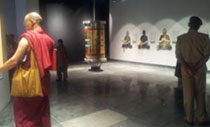
Buddha Smriti Park in Bihar, India
CLIENT NEWS |
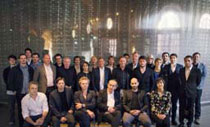
Architects compete for Nobel Center in Stockholm
ANNOUNCEMENTS |
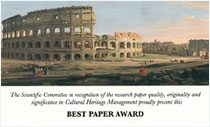
Barry Lord Wins Best Paper Award in Rome, Italy
EVENTS |
|
| |
|
Guest Editor: Joy Bailey Bryant | Assistant Guest Editor: Priya Sircar | Managing Editor: Iwona Osmolska
Production: Andrea Kezdi and Akil Worrell |
| |
CURRENT ISSUE | PRINT ISSUE | ARCHIVE | CONTACT | SUBSCRIBE
|
Copyright © Lord Cultural Resources, www.lord.ca. All Rights Reserved.
Lord Cultural Resources values your privacy and does not sell or trade email addresses.
Please see our privacy policy for more information.
Share your views and email us at news@lord.ca.
|

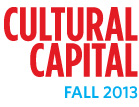





 In February 2012, the City of Chicago’s Department of Cultural Affairs and Special Events (DCASE) commenced an exciting initiative to develop a cultural plan for the city. Launched by Mayor Rahm Emanuel in October 2012, the plan created a framework to guide Chicago’s future cultural and economic growth. The Chicago Cultural Plan 2012 is the centerpiece of the city’s strategy o becoming a global destination for creativity, innovation and excellence. As a direct result of the Cultural Plan process, DCASE is working collaboratively with sister governmental agencies like the Departments of Housing and Economic Development, Education, Innovation and Technology and countless other city entities to fulfill the 200+ initiatives of the Plan. While we have always worked with these departments, our level of partnership now far exceeds what had been happening before.
In February 2012, the City of Chicago’s Department of Cultural Affairs and Special Events (DCASE) commenced an exciting initiative to develop a cultural plan for the city. Launched by Mayor Rahm Emanuel in October 2012, the plan created a framework to guide Chicago’s future cultural and economic growth. The Chicago Cultural Plan 2012 is the centerpiece of the city’s strategy o becoming a global destination for creativity, innovation and excellence. As a direct result of the Cultural Plan process, DCASE is working collaboratively with sister governmental agencies like the Departments of Housing and Economic Development, Education, Innovation and Technology and countless other city entities to fulfill the 200+ initiatives of the Plan. While we have always worked with these departments, our level of partnership now far exceeds what had been happening before.
 In 2010, the City partnered with City Schools Decatur, Agnes Scott College, the Downtown Development Authority and the Decatur Arts Alliance (DAA), at the time a fledgling membership organization for city artists and arts organizations, to create a Cultural Arts Master Plan (CAMP).
In 2010, the City partnered with City Schools Decatur, Agnes Scott College, the Downtown Development Authority and the Decatur Arts Alliance (DAA), at the time a fledgling membership organization for city artists and arts organizations, to create a Cultural Arts Master Plan (CAMP).
 In late 2011, The Priddy Foundation of Wichita Falls, Texas, saw local arts organizations struggling in a city experiencing many challenges, from a weak economy to a shrinking population.
In late 2011, The Priddy Foundation of Wichita Falls, Texas, saw local arts organizations struggling in a city experiencing many challenges, from a weak economy to a shrinking population.


